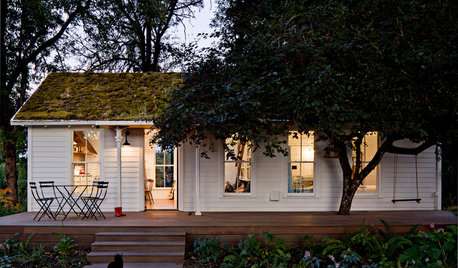Do I really want to use 2, 4-D?
cyclewest
16 years ago
Related Stories

MORE ROOMSRooms I'd Like to See Wrapped Up as Gifts for the Holidays!
What Room Do You Have on Your Gift List This Year?
Full Story
SMALL HOMESHouzz Tour: A Family of 4 Unwinds in 540 Square Feet
An extraordinarily scaled-down home and garden for a couple and their 2 kids fosters sustainability and togetherness
Full Story
FUN HOUZZEverything I Need to Know About Decorating I Learned from Downton Abbey
Mind your manors with these 10 decorating tips from the PBS series, returning on January 5
Full Story
DESIGN PRACTICEDesign Practice: How to Pick the Right Drawing Software
Learn about 2D and 3D drawing tools, including pros, cons and pricing — and what to do if you’re on the fence
Full Story
HOUZZ TOURSMy Houzz: Bridge Building Redefines a D.C. Row House
A new rooftop deck and elevated walkway give a Capitol Hill couple an enviable outdoor haven away from noise on the street
Full Story
I. DIE. The Rachel Zoe Project Is Back
As Season 4 premiers we visit some fashion-forward rooms this tastemaker would appreciate
Full Story
TASTEMAKERS3D Printing Takes Furnishings to New Heights at ICFF 2013
See how three-dimensional printing, laser cutting and other innovative technologies are changing the face of furnishings
Full Story
WORKING WITH AN ARCHITECTWho Needs 3D Design? 5 Reasons You Do
Whether you're remodeling or building new, 3D renderings can help you save money and get exactly what you want on your home project
Full Story
BEDROOMSTrending Now: 25 Bedrooms We’d Love to Fall Asleep In
Looking for a comfortable and calm space? Consider some of the most popular new bedroom photos on Houzz
Full Story
HOME OFFICESDream Spaces: Home Offices You’d Be Delighted to Work In
Warm lighting, comfortable furnishings and pleasing views can make you want to head into your home office each day
Full Story





bpgreen
cyclewestOriginal Author
Related Professionals
Cary Landscape Architects & Landscape Designers · Saint Louis Park Landscape Architects & Landscape Designers · Seabrook Landscape Architects & Landscape Designers · Southfield Landscape Architects & Landscape Designers · Wilmington Landscape Contractors · Beverly Hills Landscape Contractors · Brooklyn Park Landscape Contractors · Kearny Landscape Contractors · Kettering Landscape Contractors · Morrisville Landscape Contractors · West Palm Beach Landscape Contractors · Silver Firs Landscape Contractors · Black Forest Siding & Exteriors · Bountiful Siding & Exteriors · Cherry Hill Siding & Exteriorsbpgreen
jimh6278